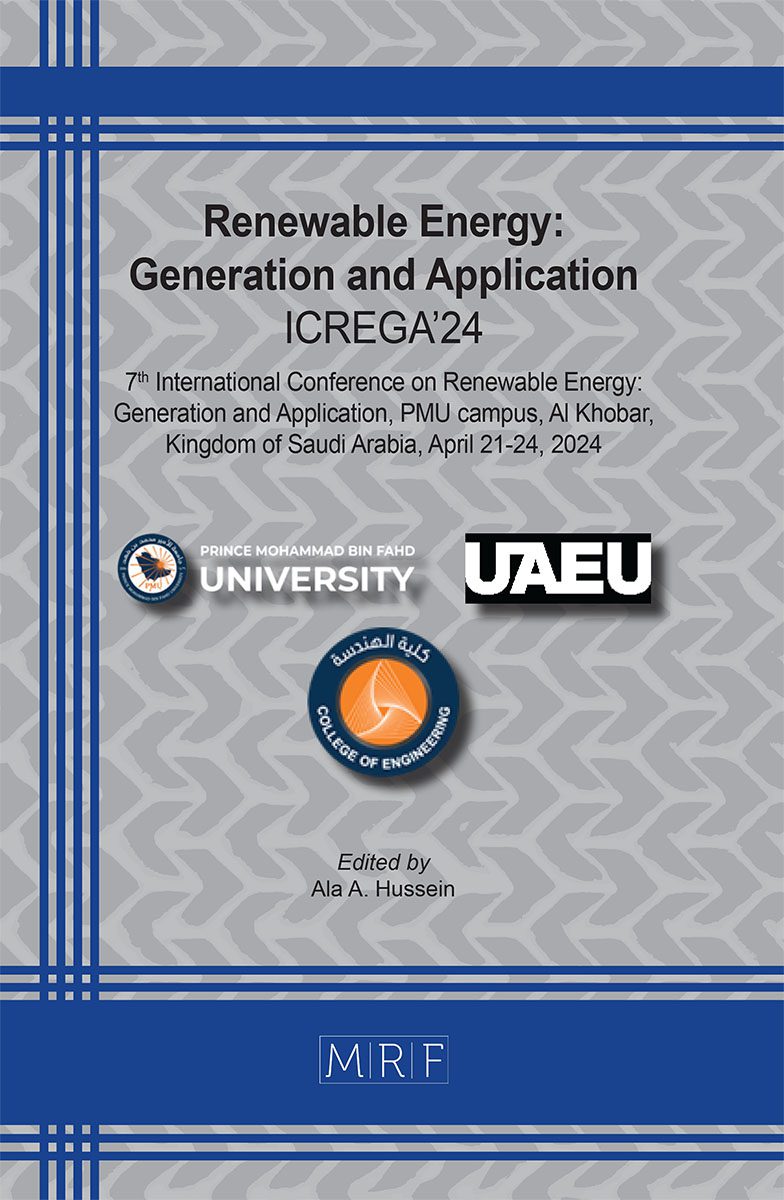–
Solar radiation forecasting using attention-based temporal convolutional network
Damilola OLAWOYIN-YUSSUF, Mohamad MOHANDES, Bo LIU, Shafiqur REHMAN
download PDFAbstract. Solar energy, an inexhaustible and pristine power source, harbors the capability to mitigate the emissions of greenhouse gases and the dependency on fossil fuels, thereby playing a pivotal role in the conservation of our ecosystem. Nevertheless, the process of harnessing solar energy from sunlight is subject to the capricious characteristics of weather conditions, which include variables such as the density of cloud cover, levels of atmospheric moisture, and fluctuations in temperature. Hence, the task of prognosticating solar radiation holds significant importance for the strategic planning and efficient management of solar power systems. The current machine-learning methods for predicting global solar radiation make use of recurrent networks. One major downside of recurrent-based models is that they are exposed to vanishing gradients and stagnant performance over longer available input sequences. The model showcased is an attention-fueled Temporal Convolutional Network (TCN) intertwined with Convolutional Neural Network (CNN). The suggested method merges the advantages of the feature extraction proficiencies of a TCN and the aggregation capabilities of a CNN. The method has been tested for up to 24 hours of future time sequence prediction and it has been noted that its performance is unmatched.
Keywords
Global Solar Radiation, Temporal Convolutional Network (TCN), LSTM
Published online 7/15/2024, 8 pages
Copyright © 2024 by the author(s)
Published under license by Materials Research Forum LLC., Millersville PA, USA
Citation: Damilola OLAWOYIN-YUSSUF, Mohamad MOHANDES, Bo LIU, Shafiqur REHMAN, Solar radiation forecasting using attention-based temporal convolutional network, Materials Research Proceedings, Vol. 43, pp 88-95, 2024
DOI: https://doi.org/10.21741/9781644903216-12
The article was published as article 12 of the book Renewable Energy: Generation and Application
![]() Content from this work may be used under the terms of the Creative Commons Attribution 3.0 license. Any further distribution of this work must maintain attribution to the author(s) and the title of the work, journal citation and DOI.
Content from this work may be used under the terms of the Creative Commons Attribution 3.0 license. Any further distribution of this work must maintain attribution to the author(s) and the title of the work, journal citation and DOI.
References
[1] Makade, R.G., Chakrabarti, S., Jamil, B.: Development of global solar radiation models: A comprehensive review and statistical analysis for indian regions. Journal of Cleaner Production 293, 126208 (2021) https://doi.org/10.1016/j.jclepro.2021.126208
[2] Solano, E.S., Dehghanian, P., Affonso, C.M.: Solar radiation forecasting using machine learning and ensemble feature selection. Energies 15(19), 7049 (2022). https://doi.org/10.3390/en15197049
[3] Ngiam, K.Y., Khor, W.: Big data and machine learning algorithms for health-care delivery. The Lancet Oncology 20(5), 262–273 (2019). https://doi.org/10.1016/S1470-2045(19)30149-4
[4] Rehman, S., Mohandes, M.: Artificial neural network estimation of global solar radiation using air temperature and relative humidity. Energy policy 36(2), 571– 576 (2008). https://doi.org/10.1016/j.enpol.2007.09.033
[5] Ghimire, S., Nguyen-Huy, T., Prasad, R., Deo, R.C., Casillas-Perez, D., SalcedoSanz, S., Bhandari, B.: Hybrid convolutional neural network-multilayer perceptron model for solar radiation prediction. Cognitive Computation 15(2), 645–671 (2023). https://doi.org/10.1007/s12559-022-10070-y
[6] Pang, Z., Niu, F., O’Neill, Z.: Solar radiation prediction using recurrent neural network and artificial neural network: A case study with comparisons. Renewable Energy 156, 279–289 (2020). https://doi.org/10.1016/j.renene.2020.04.042
[7] Alizamir, M., Shiri, J., Fard, A.F., Kim, S., Gorgij, A.D., Heddam, S., Singh, V.P.: Improving the accuracy of daily solar radiation prediction by climatic data using an efficient hybrid deep learning model: Long short-term memory (lstm) network coupled with wavelet transform. Engineering Applications of Artificial Intelligence 123, 106199 (2023). https://doi.org/10.1016/j.engappai.2023.106199
[8] Ali-Ou-Salah, H., Oukarfi, B., Bahani, K., Moujabbir, M.: A new hybrid model for hourly solar radiation forecasting using daily classification technique and machine learning algorithms. Mathematical Problems in Engineering 2021, 1–12 (2021). https://doi.org/10.1155/2021/6692626
[9] Paoli, C., Voyant, C., Muselli, M., Nivet, M.-L.: Forecasting of preprocessed daily solar radiation time series using neural networks. Solar energy 84(12), 2146–2160 (2010). https://doi.org/10.1016/j.solener.2010.08.011
[10] Xing, X., Li, Z., Xu, T., Shu, L., Hu, B., Xu, X.: Sae+ lstm: A new framework for emotion recognition from multi-channel eeg. Frontiers in neurorobotics 13, 37 (2019). https://doi.org/10.3389/fnbot.2019.00037
[11] Ghimire, S., Deo, R.C., Wang, H., Al-Musaylh, M.S., Casillas-P´erez, D., SalcedoSanz, S.: Stacked lstm sequence-to-sequence autoencoder with feature selection for daily solar radiation prediction: a review and new modeling results. Energies 15(3), 1061 (2022). https://doi.org/10.3390/en15031061
[12] Liu, G., Guo, J.: Bidirectional lstm with attention mechanism and convolutional layer for text classification. Neurocomputing 337, 325–338 (2019). https://doi.org/10.1016/j.neucom.2019.01.078
[13] Azizi, N., Yaghoubirad, M., Farajollahi, M., Ahmadi, A.: Deep learning based long-term global solar irradiance and temperature forecasting using time series with multi-step multivariate output. Renewable Energy 206, 135–147 (2023). https://doi.org/10.1016/j.renene.2023.01.102
[14] Gugulothu, N., Tv, V., Malhotra, P., Vig, L., Agarwal, P., Shroff, G.: Predicting remaining useful life using time series embeddings based on recurrent neural networks. arXiv preprint arXiv:1709.01073 (2017)
[15] Vaswani, A., Shazeer, N., Parmar, N., Uszkoreit, J., Jones, L., Gomez, A.N., Kaiser, L., Polosukhin, I.: Attention is all you need. Advances in neural information processing systems 30 (2017)
[16] Bai, S., Kolter, J.Z., Koltun, V.: An empirical evaluation of generic convolutional and recurrent networks for sequence modeling. arXiv preprint arXiv:1803.01271 (2018)
[17] He, K., Zhang, X., Ren, S., Sun, J.: Deep residual learning for image recognition. In: Proceedings of the IEEE Conference on Computer Vision and Pattern Recognition, pp. 770–778 (2016). https://doi.org/10.1109/CVPR.2016.90
[18] Balabaeva, K., Kovalchuk, S.: Comparison of temporal and non-temporal features effect on machine learning models quality and interpretability for chronic heart failure patients. Procedia Computer Science 156, 87–96 (2019). https://doi.org/10.1016/j.procs.2019.08.183












